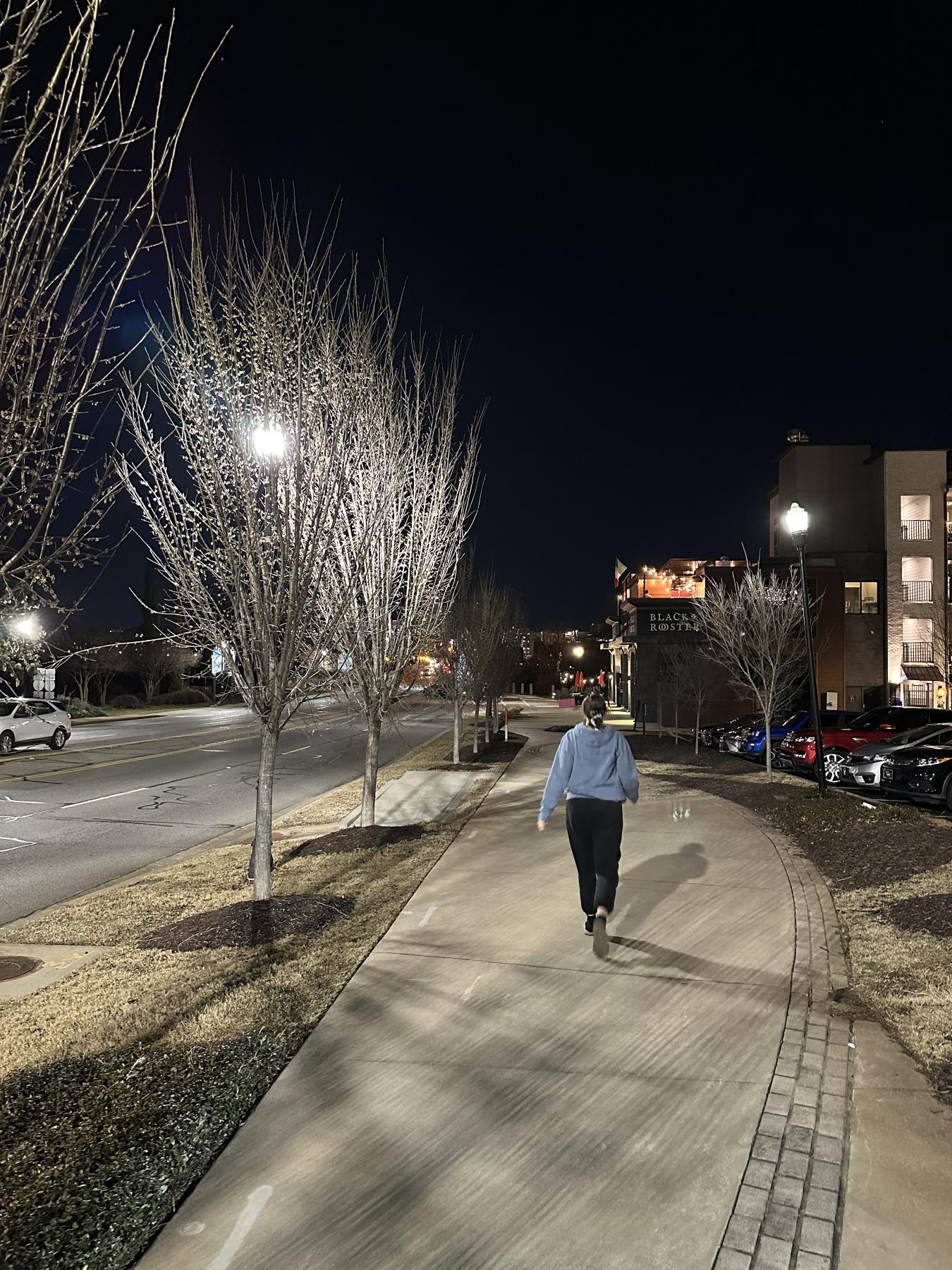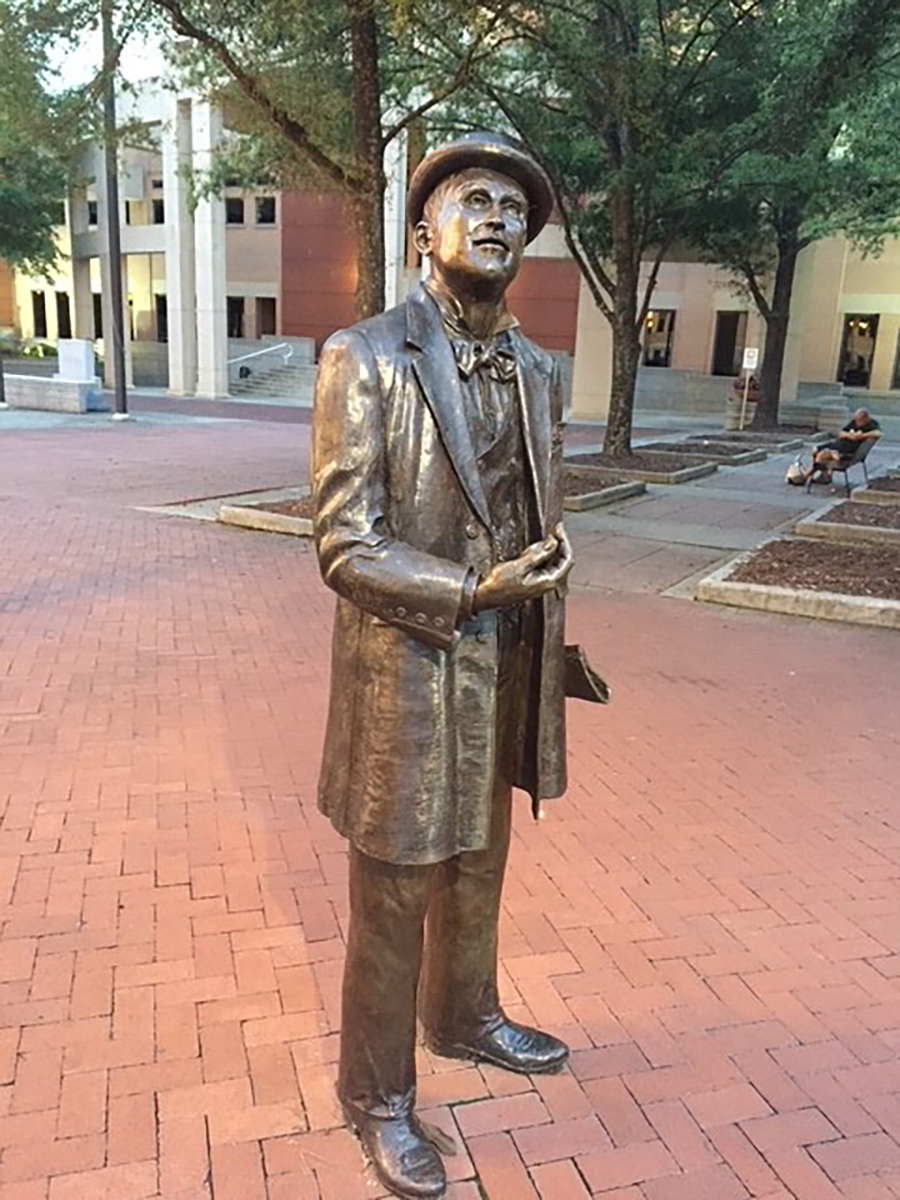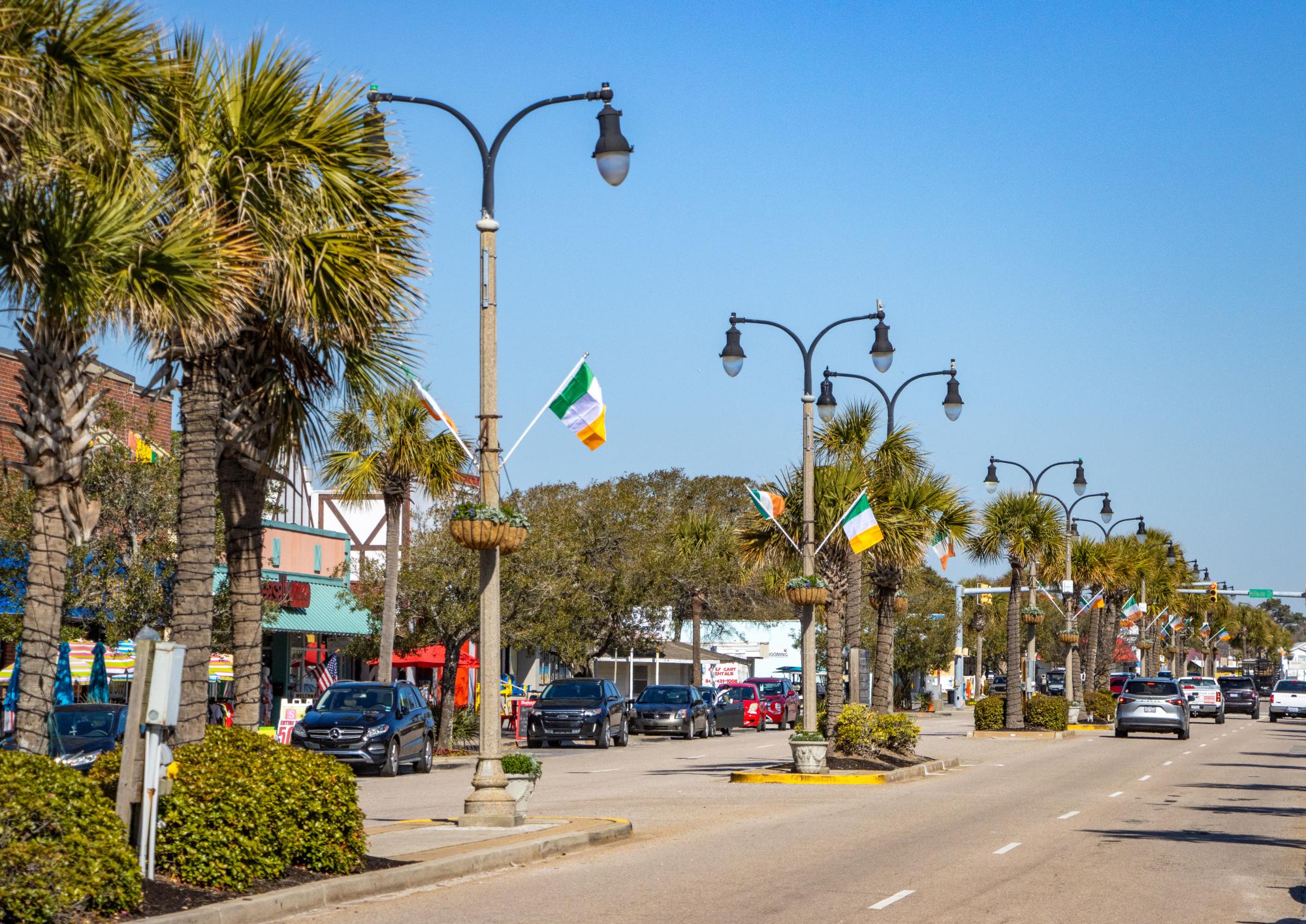Ubiquitous and easy to overlook, streetlights nonetheless play a pivotal role in a city — affecting everything from pedestrian safety to helping drivers navigate an unfamiliar intersection to making commercial areas more inviting.
As technology changes, the light shining onto some city streets is changing, too. The City of West Columbia, for example, is one of many municipalities that has worked toward upgrades of light-emitting diodes, typically known as LED lights. It worked with its electrical service provider Dominion Energy to swap its traditional streetlights with LED lights to improve safety and reduce energy costs, said Tara Greenwood, West Columbia’s assistant city administrator of development.
“For us, as we talk about energy efficiency and saving money, LEDs typically use 50% to 75% less energy than traditional [streetlights],” she said. “It allows us the ability to upgrade our public lighting while potentially reducing energy costs significantly. Those are cost savings we can pass along by saving on municipal energy bills.”

Conversion of West Columbia’s 1,500 streetlights to LEDs began
in the city’s River District. Photo: City of West Columbia.
Greenwood said the rough estimate in savings for streetlights that have switched to LED lights is about $2 to $4 per streetlight per month. The LED lights also have a longer live span — about three to five times longer than traditional bulbs — which means a reduction in labor and material costs.
The program offered by Dominion allows for customizable options with a variety of LED fixture types that work in roadways, parking lots and streetscapes. Cities apply for the Dominion program, and if the project is approved, the utility company installs the new LED streetlights.
Along with the cost and energy savings, Greenwood said the city is particularly interested in improving visibility to make the city streets safer for pedestrians, drivers and bicyclists.
“LED lights provide brighter and more uniform illumination than traditional fluorescent lights,” she said. “It’s more of a white light, not the yellow or orangey dim light. It gives more of an accurate color to make street signs and buildings a little clearer to see.”
West Columbia has roughly 1,500 streetlights. It started the LED replacements through the Dominion program in 2022, first targeting the city’s River District, which is home to many restaurants and shops.
“We’re working with Dominion through this program block-by-block in those areas where we have a lot of pedestrian traffic, where we have people out walking in the evening, especially down in the River District,” Greenwood said.
“Safety is paramount in the City of West Columbia. We want all those who traverse the city to feel safe.”
She said the feedback from residents has been mostly positive. “If there are any concerns, we work with Dominion to fine tune the brightness level or an angle to accommodate community needs,” she said. “If it’s shining too bright in one area and we have to tweak it, we work with Dominion on that. They’re a great community partner.”
She suggested other cities interested in improving their street lighting make sure to keep the lines of communication open with the utility provider, business leaders and residents to ensure everyone is on the same page about wants, needs and expectations.
She also said West Columbia has successfully leveraged incentives and rebates for switching over to energy efficient lighting, along with researching grants ad partnerships to help offset the costs.
The Upstate City of Anderson takes its electricity seriously. Known as “the Electric City,” Anderson was the first city in the United States to have a continuous supply of electric power and the first in the world to create a cotton gin operated by electricity, said Beth Batson, the city’s public information director.
“Anderson native William Church Whitner was the man who first conceived the idea of generating alternating current electricity using turbulent river water to send power to the city in 1896. He is honored with a bronze sculpture in the city’s center,” she said. “This history of innovation informs the business environment in Anderson today as it boasts one of the finest entrepreneurial facilities in the area.”

The statue of William Church Whitner, who conceived the
pioneering electric system in Anderson, gazes up at a streetlight.
Photo: City of Anderson.
And if one of the city’s streetlights goes out, residents have options on how to report the issue. They can directly report outages to Duke Energy, the city’s energy provider, by phone or through the website, or they can report the outage to Anderson’s public works division and the office will submit the outage to Duke’s website.
Batson said Anderson’s signal and sign department inspect streetlights by zone on a monthly basis, and outages are reported to Duke Energy.
“Citizens can report areas of street lighting deficiency to the city, and a study will be conducted to determine if additional lights need to be added to the inventory,” she said.
In the City of North Myrtle Beach, most street lighting is designed primarily for roadway safety, but some areas such as its Main Street feature enhanced pedestrian lighting to improve walkability and accessibility.
“Streetlights play a crucial role in enhancing roadway safety by improving visibility for motorists, cyclists and pedestrians. They help reduce accidents at intersections and make it easier for drivers to see potential hazards,” North Myrtle Beach Public Information Officer Lauren Jessie said. “Well-lit streets also contribute to a sense of security and support the local economy by making public spaces more inviting.”

North Myrtle Beach uses a structured system for streetlight placement, and has
about 2,300 streetlights in total. Photo: City of North Myrtle Beach.
Jessie said North Myrtle Beach follows a structured streetlight placement system with lights installed at each intersection, and then spaced every 500 feet along roadways, ensuring consistent and effective lighting coverage.
North Myrtle Beach has about 2,300 streetlights. Requests for additional lighting are reviewed to determine if the new lights would align with the city’s policy. If approved, the city works with its utility provider to maintain and install streetlights.
Residents may call the city’s public works office to report and outage or request a new streetlight. Those reports and requests help the city make informed decisions and allocate resources effectively.
“Understanding the city’s policy helps residents know where streetlights are placed and why,” Jessie said. “If they request a new streetlight, they’ll be aware of the criteria used to evaluate their request.”
The city also takes an active role in monitoring streetlights, with police officers regularly checking lighting conditions and reporting any issues.
“Streetlights play a key role in public safety, and timely reporting of outages ensures that roads and sidewalks remain well-lit,” she said. “While streetlights enhance visibility and security, they are not a replacement for private security lighting. If residents have specific security concerns near their property, we encourage them to contact their utility provider about installing a private security light that does not face the public right-of-way.”
